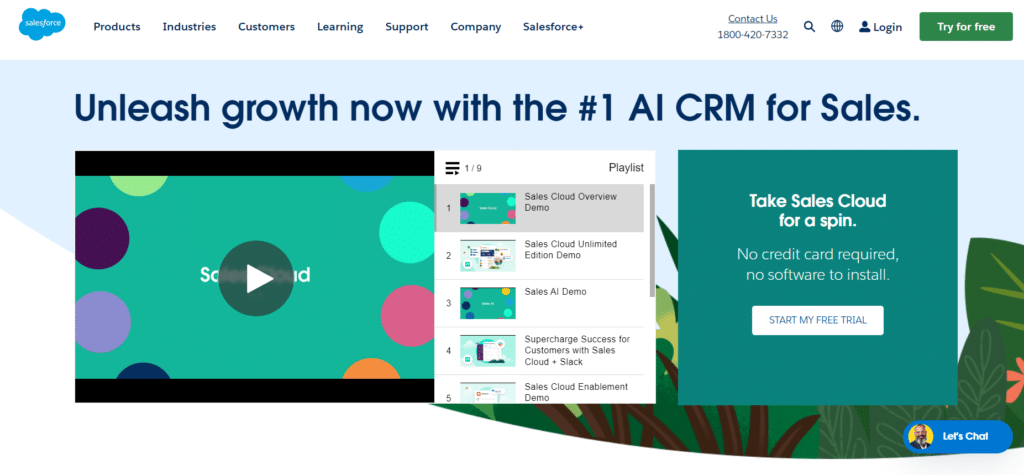Salesforce Streaming API: Salesforce is a leader in cutting-edge solutions that enable businesses to stay ahead in the dynamic field of customer relationship management (CRM). The Salesforce Streaming API is a feature that has been revolutionary in the Salesforce platform. It is a potent tool that offers real-time insights into data changes and occurrences. We’ll delve into the nuances of the Salesforce Streaming API in this extensive overview, revealing its primary features, applications, and the potential for business transformation.

It makes it possible for real-time data from the Salesforce Platform to be transmitted. Push Technology is used to convey data. With push technology, data is sent from a server to a client at the client’s request. One of the subscription mechanisms available in Mulesoft or Node.js, such as CometD and Subscription API, can be utilized. Another name for push technology is the publish/subscribe model. CometD allows the client to stay connected to the server and enables the server to send data to the client as it becomes available.
Table of Contents
ToggleWhat is Streaming API?
Using push technology, streaming API makes it possible to stream events and offers a subscription method for getting events almost instantly. Several kinds of events, such as PushTopic events, generic events, platform events, and Change Data Capture events, are supported via the Streaming API subscription mechanism.

Salesforce Streaming API offers a subscription mechanism for receiving events in almost real-time and allows events to be streamed using push technology. The Salesforce Streaming API subscription mechanism supports many kinds of events, including PushTopic events, generic events, platform events, and Change Data Capture events.
Where should we use Salesforce Streaming API?
When you need to maintain synchronization between your external source and Salesforce data through PushTopic events and Change Data Capture events, you utilize the Salesforce Streaming API. You can process business logic in an external system in reaction to changes in Salesforce data by using the Salesforce Streaming API. Using platform events and generic streaming, we may broadcast custom notifications via the Salesforce Streaming API.
Where should we apply it?
When you need to maintain synchronization between your external source and Salesforce data through PushTopic events and Change Data Capture events, you utilize the Salesforce Streaming API. You can process business logic in an external system in reaction to changes in Salesforce data by using the Salesforce Streaming API. Using platform events and generic streaming, we may broadcast custom notifications via the Salesforce Streaming API.
How to operate: The server receives an HTTP request. Rather than replying right away, the server records the request and waits for a predetermined event to occur—in this case, a modification to one of the fields in our PushTopic object. A response is sent in the event that it is fired. Subsequently, the client submits an additional request to the server, which remains open and patient. This ultimately takes on the appearance of this.

Real-Time Application
Real-time tracking of a flight’s path via streaming API
Modernizing cross-border management and data sharing has been heavily pushed in the aviation industry, particularly in the air traffic management (ATM) sector. Every day, a growing amount of information is made available through reliable and commercial aviation sources, and demand for this information is rising in tandem. Even if the data is made public, it is frequently delivered in many formats and via various technologies, which makes it challenging for the end user to use.

The Rest and Streaming APIs make harmonized data easily accessible, but we choose the best API for the job based on how the user intends to use the data. In this blog post, we’ll discuss the main distinctions between REST and Streaming APIs and then show you how to use each to address crucial operational use cases in the ATM and aviation sectors.
REST API

A web service that uses the request-response pattern is called a Representational State Transfer (REST) API. The required data will be sent in a single response to the user’s specific information request via the REST API. The connection ends when the user receives their response from the API and reopens upon the user submitting another request. For users who seek a “snapshot” of data where the content does not change regularly, REST APIs are ideal.
Streaming API

Until the connection is broken, streaming APIs keep up a persistent connection and deliver the user updated data continuously. When a user wants to consume a continuous flow of live data that is changing quickly, streaming APIs are ideal. The user must finally disconnect the connection after receiving many responses from the server containing new data.
Real-time tracking of a flight from Paris Charles de Gaulle Airport to London Gatwick Airport using the Salesforce streaming API.
Request-Response / REST APIs are, therefore, ideal if you are a developer creating an application that aims to estimate demand and capacity or if you are curious about the total number of flights completed for a specific airport at the end of each day. Answers on demand are made more accessible by using REST APIs, which give users instant access to the precise data they require.
General Notification
Applications that need to be notified publicly when data in an organization changes. These applications can increase performance and decrease the number of API requests by utilizing Streaming API.
- Advance Technology: Push technology delivers information that is initiated from a server to the client. It is often referred to as the publish/subscribe model. This kind of communication is the antithesis of pull technology, which involves a client requesting information from a server.
- Terms for Streaming APIs: Study up on the terminology used in Streaming API.
- Message Trustworthiness: By allowing you to replay previous events through persistent streaming, the Streaming API offers dependable message delivery for customers who have subscribed to API version 37.0 or later. In some instances, clients who subscribed using API version 36.0 or earlier might receive only some messages.
- Message Durability: PushTopic, generic, and standard-volume events are stored by Salesforce for 24 hours, whereas high-volume events are held for 72 hours.
- Streaming Event features: Platform events and change data collection events are examples of high-volume events. Only events defined before to Spring ’19 are included in the standard-volume events, which are no longer available. Durable streaming can be used to obtain events that fall within the retention window, starting with API version 37.0
Conclusion
To sum up, the Salesforce Streaming API offers a paradigm shift in the way businesses can use real-time data to inform decisions and improve user experiences. Through an exploration of its core characteristics, investigation of a variety of use cases, and adherence to recommended practices, enterprises can effectively utilize the Streaming API to construct dynamic and adaptable applications that meet the expectations of the contemporary CRM environment.
With the growing importance of data-driven decision-making and real-time collaboration, the Salesforce Streaming API has become an indispensable resource for companies looking to maintain their leadership position in the CRM industry.




